|
Carnivorous Plant Newsletter
Volume 44, Number 4, December 2015, pages 213 - 215
New Cultivars
Drosera intermedia ‘Éclat’
Dionaea ‘Coquiton’
Nepenthes ‘Guillermo Reyes’
Drosera intermedia ‘Éclat’
Submitted: 31 August 2015
Drosera intermedia ‘Éclat’ was found in August 2012 among a full container of D. intermedia of wild type plants (Fig. 1 left) obtained from Cédric Azais from which the cultivar developed (by
mutation). Unlike the typical form, Drosera intermedia ‘Éclat’ has a lack of red coloration (Fig. 1).
Otherwise, the plant is similar to D. intermedia.
The name “Éclat” comes from the brightness of the mucilage.
I have successfully propagated the plant by seed and leaf cuttings.
— Arnaud Schram • 68320 Fortschwihr • France • schram.a@live.fr
 
Figure 1: Drosera intermedia ‘Éclat’ surrounded by typical reddish Drosera intermedia (left) and a clump of Drosera intermedia ‘Éclat’ (right).
Dionaea ‘Coquiton’
Submitted: 24 August 2015
Dionaea ‘Coquiton’ is totally green but can verge on yellow. It is prostrate and compact, with
arched traps, reminding one of Dionaea ‘Cudo’. The petiole is short and large and sometimes there
is an excrescence on it. The teeth are short, stocky, the tip of the teeth is curved and/or deformed,
bringing the tentacles of Drosera to mind, and there are intermediate microteeth (Figs. 2 & 3).
The name Dionaea ‘Coquiton’, coined 23 September 2014, is a combination of the names of the
parents: Dionaea ‘Coquillage’ × Dionaea ‘Triton’. The plant should be reproduced only be vegetative
means to ensure that its unique characteristics are maintained
— Alexandre Letertre • 58130 Saint Aubin Les
Forges • France • pyg0@hotmail.fr
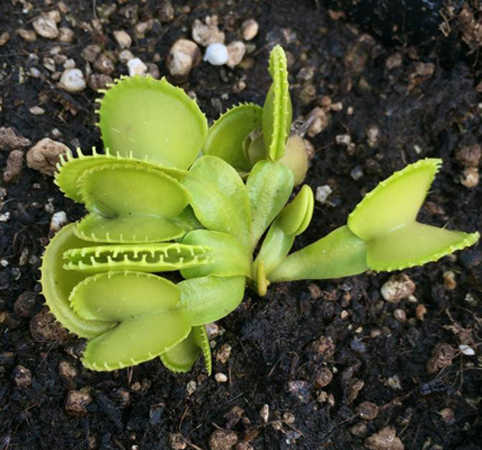
Figure 2: Dionaea ‘Coquiton’ plant
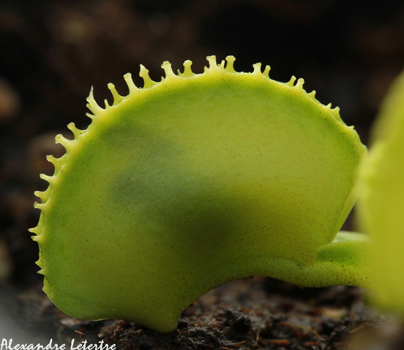 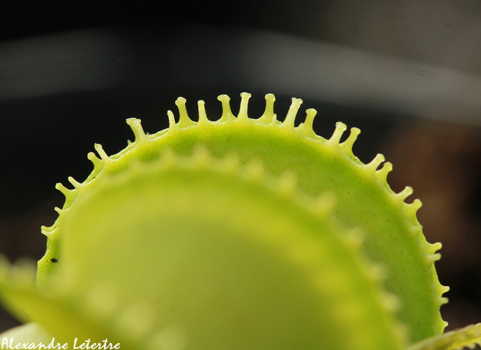
Figure 3: Arched trap and the short deformed teeth of Dionaea ‘Coquiton’.
Nepenthes ‘Guillermo Reyes’
Submitted: 21 August 2015
Nepenthes ‘Guillermo Reyes’ is a seed grown Nepenthes platychila obtained from Borneo Exotics.
I have grown this plant for the past 5 years and have not seen another N. platychilla quite like it.
I named this special plant Nepenthes ‘Guillermo Reyes’ on 10 July 2015.
Leaves of this plant are covered in short, bronze-colored hairs. The new leaf emerging from the
terminal node will often appear completely bronze in color. There is a distinctive bronze line beginning
at each auxiliary node, extending through the mid-rib of the leaf (Fig. 4).
Lower pitchers are green, heavily blotched with red and purple, and have a red striped golden
peristome (Fig. 4).
Upper pitchers are absolutely fantastic, large, and robust with a similar blotched
pitcher body as the lower pitchers, however, the peristome flares out quite far, and is covered in
hundreds of ruby red colored stripes (Front Cover).
This cultivar is named after Guillermo Reyes, a long-time friend and excellent Nepenthes grower
who has dedicated his life to this hobby.
— Axel Bostrom • Santa Rosa • California 95404 • axelbostrom24@gmail.com
 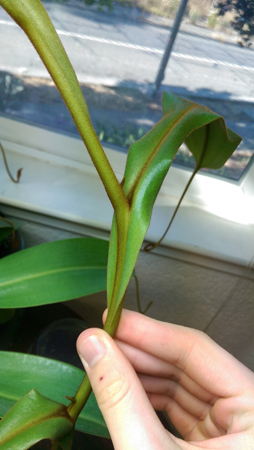 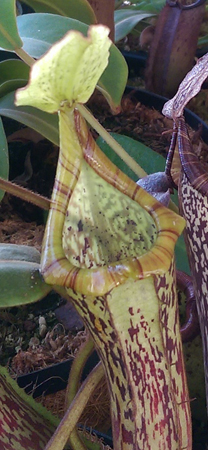
Figure 4: The new leaf emerging from the growth point appears completely bronze (left);
bronze hairs make a very obvious line down the mid rib on each leaf (center); and lower
pitcher of Nepenthes ‘Guillermo Reyes’ (right).
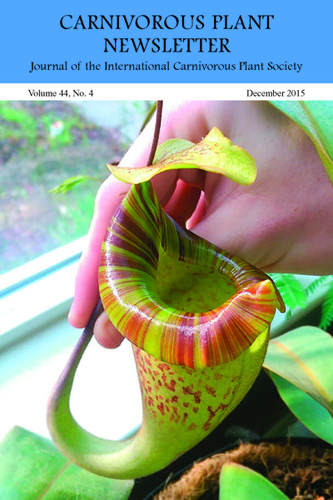
Front Cover: Upper pitcher of Nepenthes ‘Guillermo Reyes’. Photo by Axel Bostrom.
|

